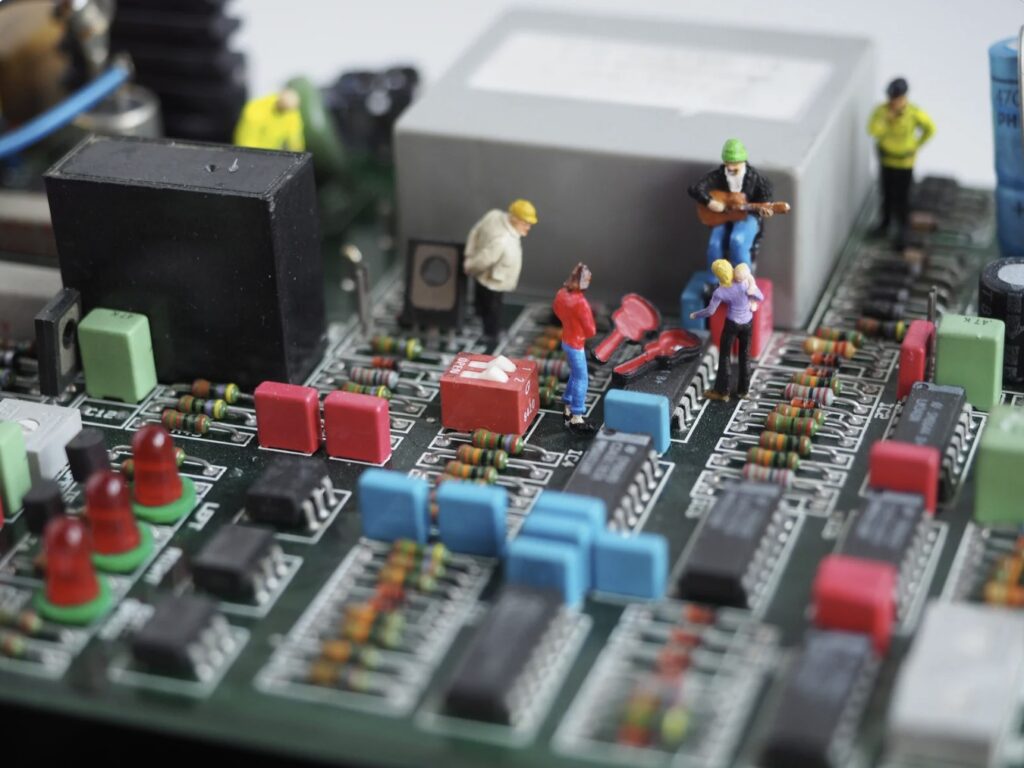In the ever-evolving landscape of technology, consumer electronics play a pivotal role in shaping our daily lives. From smartphones and smart home devices to wearables and augmented reality (AR) gadgets, the innovations in consumer electronics design have transformed how we interact with the world. These advancements stem from a blend of aesthetics, functionality, sustainability, and user experience, ensuring that devices not only serve practical purposes but also enhance convenience and engagement. This article explores some of the most groundbreaking innovations in consumer electronics design that continue to influence our lives.
1. Ergonomic and Intuitive Design
One of the most critical aspects of consumer electronics design is ergonomics—how well a device fits the human hand, eye, and mind. Intuitive design ensures that users can easily navigate through features without requiring extensive manuals. The shift from physical buttons to touchscreens, the implementation of voice controls, and haptic feedback are all examples of how ergonomics influence design.
Apple’s iPhone revolutionized the industry by introducing a capacitive touchscreen with a user-friendly interface, paving the way for intuitive smartphone experiences. Likewise, wearable devices such as the Apple Watch and Fitbit incorporate ergonomic designs to ensure comfort during prolonged use while providing seamless integration with health monitoring applications.
2. Miniaturization and Portability
The demand for compact and portable devices has driven innovations in miniaturization. Advances in microprocessors, flexible display technology, and battery efficiency allow manufacturers to design lightweight yet powerful devices. For example, foldable smartphones and rollable OLED screens have expanded the potential for portable devices that do not compromise on screen real estate or functionality.
Wireless earbuds, such as Apple’s AirPods and Samsung’s Galaxy Buds, epitomize miniaturization by offering high-quality audio in a compact, wireless form. These devices utilize advancements in battery technology and efficient chipsets to deliver extended usability in a minimalistic design.

3. Sustainable and Eco-Friendly Materials
Environmental consciousness has become a driving force in consumer electronics design. Companies are increasingly using recycled materials, biodegradable plastics, and energy-efficient components to reduce their carbon footprint. Fairphone, for instance, has set an example by creating modular smartphones with sustainable sourcing and easy repairability, promoting a circular economy.
In addition, leading tech firms are focusing on reducing e-waste through innovative recycling programs. Apple’s Daisy, a robotic system designed to disassemble iPhones, extracts valuable components for reuse, significantly reducing the need for raw materials.
4. Smart Connectivity and IoT Integration
The rise of the Internet of Things (IoT) has revolutionized consumer electronics, allowing seamless interconnectivity between devices. Smart home ecosystems such as Google Nest and Amazon Alexa enable users to control lighting, security, and appliances with voice commands or mobile applications.
Wearables like smartwatches and fitness trackers synchronize with smartphones and health apps, providing real-time data on heart rate, sleep patterns, and physical activity. This interconnected ecosystem enhances convenience and efficiency, enabling users to monitor and control their surroundings effortlessly.
5. Artificial Intelligence and Personalization
Artificial Intelligence (AI) has significantly enhanced consumer electronics by enabling personalized experiences. AI-driven algorithms analyze user preferences and behavior to tailor recommendations, automate tasks, and enhance usability. Smart assistants like Siri, Google Assistant, and Alexa utilize AI to understand voice commands, manage schedules, and even predict user needs.
In photography, AI-driven computational photography enhances image quality by optimizing lighting, exposure, and focus. Google’s Pixel smartphones, for example, leverage AI-powered Night Sight technology to capture stunning low-light photos, pushing the boundaries of traditional camera capabilities.
6. Augmented Reality and Virtual Reality
Augmented Reality (AR) and Virtual Reality (VR) are transforming how users interact with digital content. From entertainment and gaming to education and healthcare, these technologies are enhancing immersive experiences.
Apple’s ARKit and Google’s ARCore have enabled developers to create AR applications that blend digital elements with real-world environments. AR glasses, such as Microsoft’s HoloLens and Meta’s Quest, are pushing the boundaries of how we perceive and interact with digital information in a three-dimensional space.
7. Advances in Battery Technology
Battery life has long been a challenge for consumer electronics, but innovations in battery technology are addressing this issue. Solid-state batteries promise higher energy density, faster charging, and longer lifespan compared to traditional lithium-ion batteries.
Wireless charging has also gained traction, with companies developing fast-charging solutions that eliminate the need for cables. The introduction of MagSafe technology in Apple’s devices and Qi wireless charging standards demonstrates the push toward more efficient and convenient power solutions.
8. Biometric Security and Privacy Enhancements
Security is a crucial consideration in consumer electronics, leading to the widespread adoption of biometric authentication methods such as fingerprint scanning, facial recognition, and voice recognition. Apple’s Face ID and Samsung’s ultrasonic fingerprint scanners provide secure access to devices, enhancing user privacy.
Additionally, companies are prioritizing data security by implementing end-to-end encryption, secure enclaves, and AI-driven threat detection systems to protect user information from cyber threats.
9. Adaptive and Modular Designs
The concept of modularity is gaining traction in consumer electronics, allowing users to customize and upgrade devices based on their needs. Modular smartphones, such as the now-defunct Project Ara by Google, aimed to provide users with interchangeable components, extending the lifespan of devices and reducing electronic waste.
Similarly, laptops with upgradable RAM, storage, and graphics cards provide flexibility for users who require performance enhancements without purchasing entirely new devices.
10. The Future of Consumer Electronics Design
The future of consumer electronics design lies in further integration of AI, sustainability, and human-centric innovation. Emerging trends such as brain-computer interfaces (BCI), flexible e-paper displays, and self-repairing materials hint at a future where electronics are even more adaptable and intuitive.
As technology continues to advance, the focus will shift toward designing products that not only improve functionality and aesthetics but also prioritize user well-being and environmental sustainability. The next generation of consumer electronics will likely bridge the gap between digital and physical realities, offering seamless, immersive, and intelligent experiences tailored to individual needs.
Conclusion
Consumer electronics design has come a long way, with innovations reshaping the way we interact with technology daily. From ergonomic designs and AI-driven personalization to sustainable materials and immersive AR/VR experiences, these advancements continue to push the boundaries of what’s possible. As technology progresses, the emphasis on connectivity, efficiency, and sustainability will shape the future of consumer electronics, making our lives more convenient, intelligent, and environmentally responsible.
